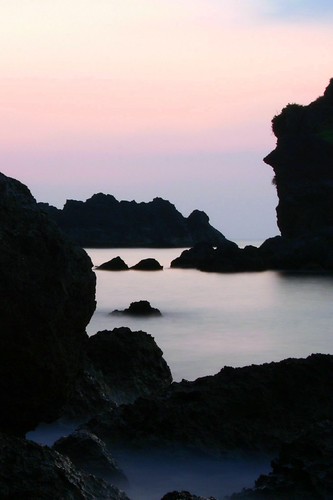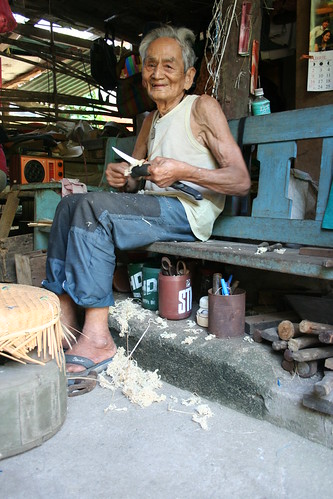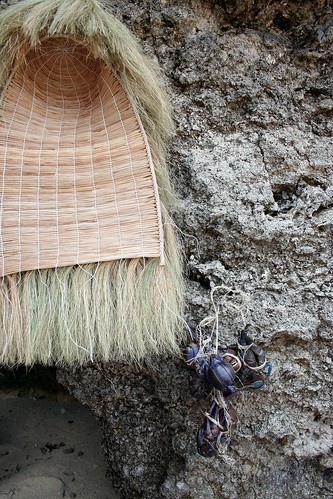what I brought back from Batanes
Batanes, the Philippines’ northernmost province, is also the country’s least populated and smallest in land area. To an ordinary Filipino, Batanes is foreign. I already have the fortune to be an occasional visitor of Tawi-Tawi, Philippines' southernmost province, even reaching far down to the island of Sitangkai, so my eyes were more than set for Batanes.
the Baluarte, Bay of Basco, Batan Island, Batanes, the Philippines
Canon EOS 350D Digital, 30s, f/32, 55mm, ISO 100, +2/3 EV
My vision of Batanes were of windswept coastline, rolling hills, stone houses, cool and wet weather– each stereotype borne from watching too many TV travelogues and I admit, a bit of a serendipitously surfed Aawitan Kita special one insomniac night and of course the Richard Gomez-Dawn Zulueta movie Hihintayin Kita sa Langit.
Getting to Batanes, I found out WAS expensive. From Cebu, I had to take three flights, with the next flight getting more costly than the next. All that travel stole time as well. When I did visit Batanes two summers ago in April 2006, I found out that everything was worth the aggravation.
In reminiscing my Batanes visit, I can look back at the memorabilia I brought back with me from my trip. They are not the usual candy fare for unsurprisingly, the Ivatans don’t have a tradition of sugary sweets. There were no known local cakes either although I always thought every region always has a rice or corn or cassava specialty. Luxury in food was not born to the hardy nature of the land.
Instead, I got myself some unusual fare. I bought bottles of turmeric which the Ivatans of Batan island use in cooking their yellow rice.
I skipped the usual magnets and t-shirts although I seemed to remember only the few resorts and hotels (there were about 3 or 4 only in 2006) carried these touristy articles. I did buy my mom a P200 (4 USD) hand-woven reed hat. My mom developed an affection for it in one of the provincial craft center stores and buying it is a way of supporting a cottage industry that doesn’t get much coverage in the overcrowded Philippine handicraft market.![Mom [6]](http://farm1.static.flickr.com/53/136702704_b1de723d46.jpg)
my Mom, enjoying her hat in Batanes, the Philippines
Canon EOS 350D Digital, 1/40s, f/5, 42mm, ISO 200, -1/3 EV
One of my regrets in my visit was missing out on buying the only finished inventory of Ireneo Hornedo. Already 99 years old, he is the oldest of the living artists of Sabtang Island which is south of Batan "mainland". He is the last remaining maker of native woven conical reed hats (called salakot in most Filipino dialects) in Chavayan town. One piece takes about 7 days to finish and only goes for $8. Although this is expensive by Philippine standard, there is no shortage of buyers, often tourists like me. He regularly participates in government-organized training programs that aim to develop younger apprentices in the making of salakot, the vacul (a rain head gear that resembles a wig made of leaf fiber) and fiber coats. Incidentally, his finished piece that week was bought by Ms. Blessida Diwa, the director of the Department of Tourism of Region 2 where Batanes is a part of. She beat me to it by a minute. At least I know it is in good hands.
at the Hornado house in the town of Chavayan, Sabtang Island, Batanes, the Philippines
Canon EOS 350D Digital, 1/30s, f/3.5, 21mm, ISO 400
If there was one thing that I promised myself to bring back from Batanes, it is vacul, the unique headgear of the Ivatans. Its use is still common among women for it can be cape-like in length and when worn over the head, leaves their hands free to till the farms. The vacul is made of shredded leaves of a unique palm in Sabtang island. Woven tightly, hairlike, naturally straw in color, it is effectively waterproof.
This time, I did not fail to grab one of the remaining stocks at a weaver’s house in Chavayan. At P400 or 8 USD, it was a steal.
There was no way we could check the fragile piece so we handcarried the vacul all the way to Cebu. How I remember the stares we got at the airports of Tuguegarao, Manila and Cebu. You wouldn’t know what a vacul truly is until you see it!
the vacul and the tatu crab, Sabtang Island, Batanes, the Philippines
Canon EOS 350D Digital, 1/200s, f/5, 21mm, ISO 100
coming up: more of the Batanes adventure






3 comments:
i love love love love your blog about batanes!
:)
oh salamat! I'll be blogging more about my trip soon.
VOILÁ..!! CHAVAYAN...that nostalgic place of AWESOME BATANES that strikes my heart's chord longing to sèè in REAL TIME..watchout "Dyösa ng Chavayan I'LL find U there!
Post a Comment